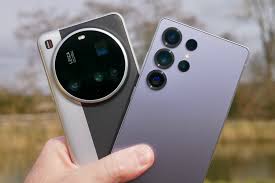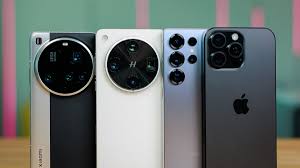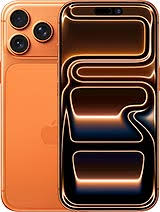1. Introduction:
Camera wars, best smartphone camera 2025, smartphone photography, flagship camera phones, camera comparison — welcome to the definitive, hands-on guide where we compare the best flagship camera phones of 2025 across daylight, low-light, portrait, zoom and video. Whether you care about natural color, night shots, or insane telephoto reach, this guide explains how smartphone photography works, what the top phones actually deliver in real life, and which device is the best camera for your needs.
2. Why the Camera Wars matter:
Smartphone cameras are no longer a convenience — they are primary cameras for most people. The “camera wars” drive rapid innovation in sensors, optics, processing, and software. Manufacturers tune their phones to excel in different shooting conditions: some prioritize natural skin tones and video (Apple), others push computational magic and AI editing (Google), while some obsess over zoom and sensor hardware (Samsung, Huawei, Oppo). The result is many excellent cameras that each trade strengths and weaknesses. Recent industry testing and ranking updates show how new models reshuffle that pecking order every few months.
3. How smartphone cameras are judged:
Evaluating a smartphone camera involves both objective and subjective tests:
Objective metrics:
- DxOMark-style lab scores: measure exposure, color, texture, noise, autofocus, artifacts, zoom, bokeh, and stabilization under controlled conditions. DXOMARK recently updated its testing methodology and rankings (Camera v6), which reshaped the leaderboard in 2025.
- Benchmark numbers: sensor size, pixel pitch, optical zoom range, aperture, OIS (optical image stabilization), and video bitrate/resolution.
Real-world / subjective metrics:
- Daylight color and detail: Do images look natural or overly saturated?
- Dynamic range: Does the camera hold detail in highlights and shadows?
- Low-light performance: Noise, detail retention, and night mode quality.
- Portraits and skin tones: Edge detection, background blur naturalness.
- Zoom/telephoto: Clarity at 3x, 5x, 10x, and long-range hybrid zoom.
- Video: Stabilization, rolling shutter, dynamic range, audio capture.
Lab ratings like DXOMARK are valuable because they repeat standard tests, but real-world shootouts (TechRadar, Tom’s Guide) remain essential to understand how results translate to everyday use.
4. The top contenders in 2025:
By mid-2025 the smartphone camera leaderboard includes a new mix of challengers and perennial favorites. According to DXOMARK’s July 2025 update, new Ultra devices from Huawei, OPPO, and Vivo lead with high camera scores, reflecting big sensor and tuning improvements. At the same time Apple’s iPhones and Samsung’s Ultra models remain top picks for balanced color science and video. TechRadar and Tom’s Guide 2025 roundups also single out Apple, Samsung, Google, and China’s new flagships for different strengths.

Notable 2025 contenders:
- Huawei Pura 80 Ultra — DXOMARK top rank (sensor+processing lead).
- OPPO Find X8 Ultra — strong in color and zoom.
- Vivo X200 Ultra — excellent low-light & portrait work.
- Samsung Galaxy S25 Ultra — huge zoom range and versatile results.
- Apple iPhone 16/16 Pro / 16 Pro Max (or latest iPhone at time of testing) — best in video and skin-tone fidelity.
- Google Pixel 9 Pro — AI-led processing and best-in-class computational photography (if available in 2025 lineup).
(Exact model naming and availability shift fast; check current model pages for final specs.)
5. Real-world tests: how phones perform across scenarios:
Below we walk through how the leading phones behave in five common scenarios: daylight, low-light/night, portrait, telephoto/zoom, and video.
Daylight:
In bright conditions the key is detail and color fidelity. Larger sensors and well-tuned ISP pipelines capture fine texture without blown highlights. According to multiple shootouts, the Pixel series historically produced punchy but natural HDR images, iPhones often prioritize realistic colors and balanced HDR, while Samsung leans slightly saturated for “pop.” In 2025 the new Chinese flagships close the gap by combining large sensors with refined color tuning.
Takeaway: If you prefer accurate, true-to-life colors go iPhone/Pixel; if you want vibrant social-ready photos, Samsung and some OPPO/Huawei models deliver.
Low-light / Night:
Low light is where sensor size, pixel binning, and noise reduction matter most. Phones with larger main sensors and aggressive multi-frame stacking produce brighter, cleaner night shots. DXOMARK tests show the new Ultra models have made big strides in night mode due to sensor improvements and smarter stacking algorithms.
Takeaway: For night scenes choose phones with proven low-light performance and multi-frame processing.
Portraits & Skin Tones:
Portrait success hinges on edge detection, bokeh naturalness, and skin tone rendering. Apple’s skin tone tuning is often praised for natural results, while Pixel’s computational portrait mode provides precise separation and flattering skin smoothing. New flagships now offer depth maps from dedicated sensors (or multi-camera fusion) to improve separation and realistic blur.
Takeaway: If people shots are your priority, sample portraits on store units — different phones render faces in different (subjective) ways.
Zoom & Telephoto:
This is where hardware counts. Periscope telephoto modules (5x–10x optical) and sensor-stitching give modern flagships remarkable reach; hybrid zoom fills gaps. Samsung’s Ultra models often lead in zoom flexibility, while some newer Chinese phones push sensor resolution for “lossless” digital crops. DXOMARK’s zoom scores reflect both optical quality and processing.
Takeaway: For wildlife or distant subjects pick a phone with real optical telephoto (not just digital zoom).
Video:

Video requires good stabilization, consistent HDR, and accurate autofocus; iPhones have long been leaders thanks to strong video pipelines and color science. Recent contestants are catching up with better codecs, higher dynamic range, and 8K options in some models — but the final quality depends on stabilization and audio capture as much as sensor specs. Tom’s Guide and TechRadar tests emphasize iPhones and Samsung for video.
Takeaway: If you shoot lots of video, prioritize stabilization, log profiles, and bitrate support — not just stills performance.
6. Computational photography: the invisible hero:
Hardware matters, but software is often the decisive factor. Modern phones capture multiple frames at different exposures and use neural ISP pipelines to merge them — producing images far better than raw sensor data alone. Features like HDR fusion, multi-frame noise reduction, night stacking, and AI scene enhancement are what make a so-so sensor produce great photos.
Examples: Google’s Pixel series uses Tensor-backed algorithms to compute superb HDR and night shots; Apple balances multi-frame stacking with color science to avoid overprocessing; Samsung applies strong sharpening and saturation to please social media audiences. In 2025 many Chinese OEMs introduced advanced on-device AI engines that speed up processing and enable advanced editing tools in final images.
7. Sensor size, optics and why hardware still matters:
While algorithms are powerful, sensor size, pixel pitch, aperture, and optical stabilization still define the ceiling:
- Sensor size: Bigger sensor = more light capture = better detail & low-light performance.
- Pixel pitch: Larger pixels collect more photons; pixel-binning can mimic larger pixels for low light.
- Aperture: Wider aperture (smaller f-number) helps shallow depth of field and low-light capture.
- OIS: Optical stabilization allows longer exposures and smoother video.
- Optical zoom modules: True optical elements preserve detail at distance.
DXOMARK’s recent ranking reshuffle highlights phones that combined bigger sensors with tuned ISPs — a reminder that hardware + software synergy wins.
8. The 2025 shortlist — short profiles & what each phone does best:
Huawei Pura 80 Ultra — sensor and dynamic range champion:
DXOMARK’s mid-2025 update placed this model atop the rankings thanks to its large main sensor and natural detail retention across conditions. If you want maximal still-photo detail and dynamic range, this is a top choice.
OPPO Find X8 Ultra — zoom & flexibility:
OPPO’s Ultra models combine a large main camera with excellent periscope optics and appealing color tuning — a great all-rounder for travel and creative compositions.
Vivo X200 Ultra — low-light and portrait specialist:
Vivo’s focus on low-light algorithms and portrait skin tone fidelity makes it a strong pick for people and night shooters.
Samsung Galaxy S25 Ultra — zoom and feature depth:
Samsung continues to pack flexible optics, an excellent telephoto system, and versatile shooting modes. It’s often the go-to for zoom and high-resolution crops. TechRadar praises the S25 Ultra for vibrant results.
Apple iPhone 16/16 Pro / 16 Pro Max — video and color fidelity:
Apple’s video pipeline, natural colors, and continuity across stills/video make iPhones the filmmaker’s favorite. Tech reviews still cite Apple for video handling and consistent skin tones.
Google Pixel 9 Pro (or latest Pixel) — computational wizardry:
Pixel’s computational tools and AI editing produce striking results with minimal user input — especially in HDR and night scenes. Tom’s Guide and other reviewers note the Pixel’s software edge.
9. The verdict: best camera by use case:
- Best overall stills (balanced): Huawei Pura 80 Ultra (DXOMARK #1 for camera at mid-2025).
- Best video: Apple iPhone (latest Pro Max/Pro).
- Best zoom/telephoto: Samsung Galaxy S25 Ultra (or equivalent Ultra model).
- Best computational features / AI editing: Google Pixel series.
- Best value camera phone: Look for last-year’s flagships during promotions — they often retain top camera performance at lower prices.
10. Tips to get better photos from any smartphone:
- Use gridlines & rule of thirds — composition still wins.
- Tap to lock exposure/focus when shooting tricky scenes.
- Shoot RAW/Pro mode for editing flexibility (if you plan to edit).
- Use a tripod for night / long exposure shots.
- Clean the lens — smudges ruin detail and bokeh.
- Prefer main sensor over ultrawide for best detail unless you need the wider angle.
- Try multiple modes — HDR, Night, Portrait and Pro modes vary in results.
- Update OS / camera app — manufacturers push improvements via updates.
11. Accessories & workflows that elevate mobile photography:
- Gimbals for smooth motion video.
- Clip-on lenses (macro/tele) for creative shots.
- External microphones for better audio in video.
- Mobile editing apps: Lightroom Mobile, Snapseed, VSCO, and native ProRAW/ProRes tools.
- Cloud backup to keep original RAW files safe.
12. Common myths about smartphone cameras:
- Myth: More megapixels always mean better photos.
Reality: Megapixels matter only when sensor size and lens quality support them. Bigger pixels often beat many megapixels on tiny sensors. - Myth: A phone with many cameras is automatically better.
Reality: Extra cameras add versatility, but main sensor quality and processing determine final image quality. - Myth: Software can completely fix bad hardware.
Reality: Software helps a lot, but hardware sets the upper limit.
13. References & External Resources:
- DXOMARK — updated camera rankings and methodology (July 2025). corp.dxomark.comDXOMARK
- TechRadar — Best camera phone 2025 roundup and tests. TechRadar
- Tom’s Guide — Best phones 2025 and photo shootouts (iPhone vs Pixel vs Galaxy). Tom’s Guide+1
14. Internal Links:
- boost sales wbols
- Mobile Application-https://play.google.com/store/apps/details?id=com.easyfindseasyols
- WBOLS https://wbols.com
- Latest Ads for Sale Top Ads




Leave a Reply